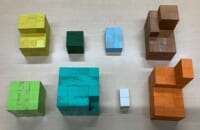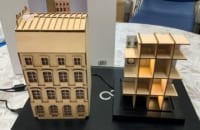4月21日を3ケタの数で表すと、421は素数です。西暦を含めた20200421は、3581×5641と2つの素数の積で表されるので素数ではありません。
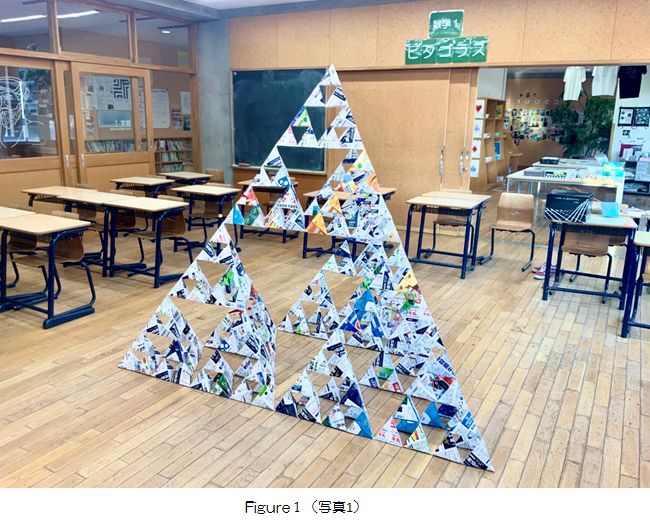
2019年度中学3年生は、ピタゴラスの定理の応用で、牛乳パックで正四面体と正八面体を作り、その体積を計算しました。
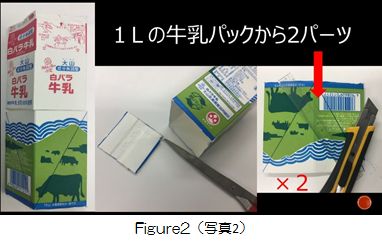 1Lの牛乳パックを約半分(高さ約12 cm)に切ったパーツ1つで一辺14 cmの正四面体1つ、パーツ2つで正八面体を1つ作りました。(写真2&3) これらの体積をピタゴラスの定理を使って計算すると、意外な結果が出るところもおもしろいです。興味のある方はぜひ体積を計算してみてください。その後、1人が1つ作った正四面体を合体させて、学年で1つのシェルピンスキー四面体を製作していきました。(写真1)
1Lの牛乳パックを約半分(高さ約12 cm)に切ったパーツ1つで一辺14 cmの正四面体1つ、パーツ2つで正八面体を1つ作りました。(写真2&3) これらの体積をピタゴラスの定理を使って計算すると、意外な結果が出るところもおもしろいです。興味のある方はぜひ体積を計算してみてください。その後、1人が1つ作った正四面体を合体させて、学年で1つのシェルピンスキー四面体を製作していきました。(写真1)
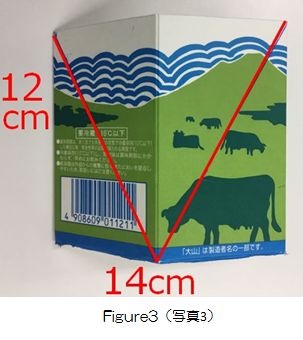
これが256個、16段に重なって、180 cmを超える(11.4×16=182.4 cm)シェルピンスキー四面体ができあがりました。春休み中、数学1教室「ピタゴラス」で展示しました。
(写真4&5)は、64個による大きなシェルピンスキーの山が3つできたところです。
4個の山(2段の正四面体)をシェルピンスキー四面体1ユニットとすると、牛乳パック4個の容積と中空部分の体積は同じです。しかし、4ユニット(16個4段)、16ユニット(64個8段)、64ユニット(256個16段)になるにつれて、牛乳パックが占める容積は完成されたシェルピンスキー四面体の4分の1、8分の1、16分の1になってしまいます。
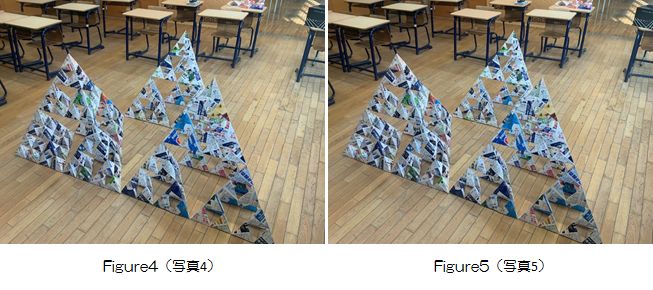
このように、シェルピンスキー四面体はとても不思議な立体です。興味を持ってくださったらうれしいです。
( 数学科 園田毅)
“Sierpinski tetrahedron by milk cartons”
Our 9th grade students made regular tetrahedron and octahedron with milk cartons, and calculated their volume using Pythagorean’s theory.
Our students made a regular tetrahedron, 14 cm on a side with a piece that is a part cut about half of a milk carton, and a regular octahedron the same length on a side in 2 pieces. (Figure2&3) It is interesting that will be a wonderful result when you calculate these volumes of 2 solids. Let’s try to calculate if you are interested in these things. Then we made a big Sierpinsky tetrahedron gathering regular tetrahedron, where 1 student made 1 regular tetrahedron. (Figure1)
We made a big Sierpinski tetrahedron with 256 pieces, 16 tiers and more than 180 cm. We exhibited it in math classroom 1 “Pythagoras” during spring vacation.
There are 3 masses of Sierpinski tetrahedron with 64 regular tetrahedron in figure 4 & 5.
If we define Sierpinski tetrahedron with 4 regular tetrahedron as 1 unit, the volume of 4 pieces of milk cartons and the space of 1 unit of Sierupinski tetrahedron are same. But when Sierpinski tetrahedron become 4 units (16 pieces, 4 tiers), 16 units (64 pieces, 8 tiers), 64 units (256 pieces, 16 tiers), the volume of the milk cartons gets smaller by a 1/4, 1/8, 1/16.
This is why that Sierpinski tetrahedron is a mysterious solid. We would be happy if you got interested in it.
by Tsuyoshi Sonoda (Math Dept.)

